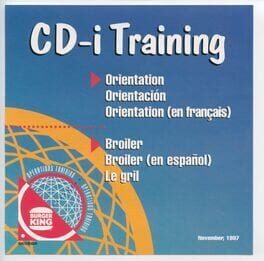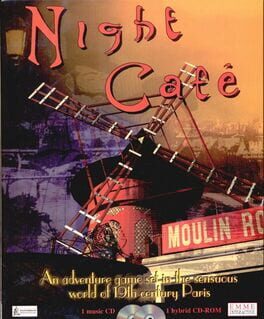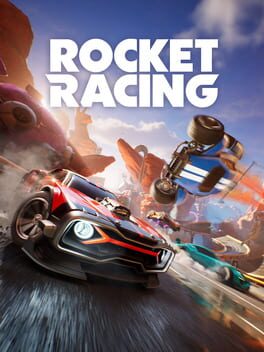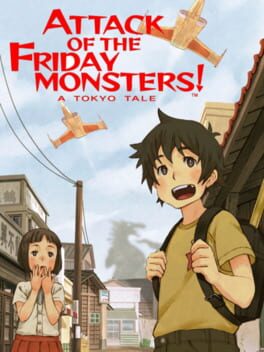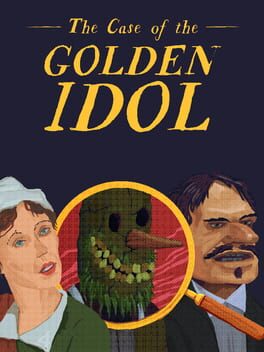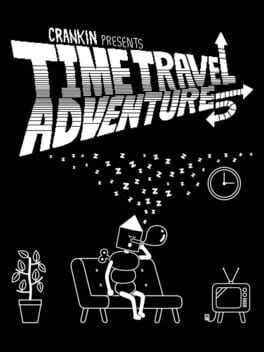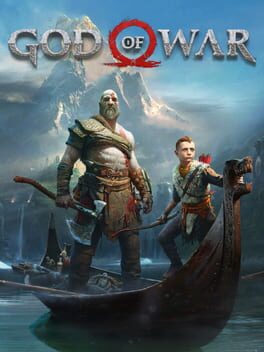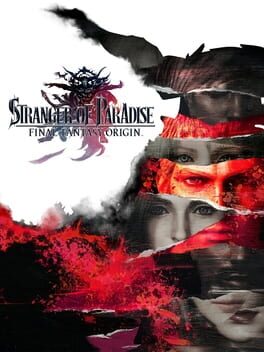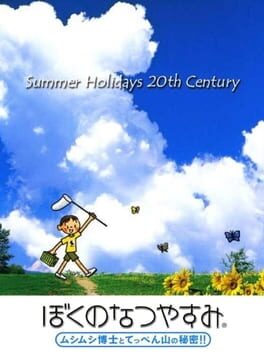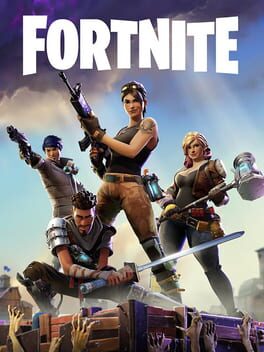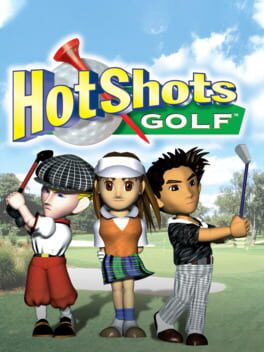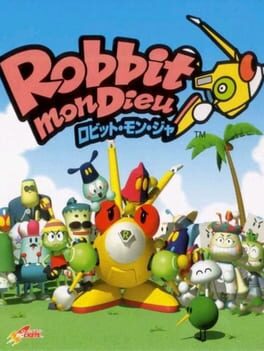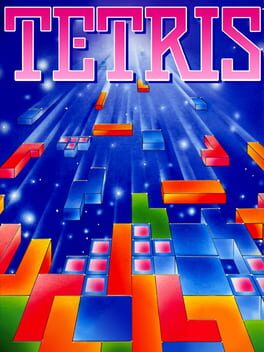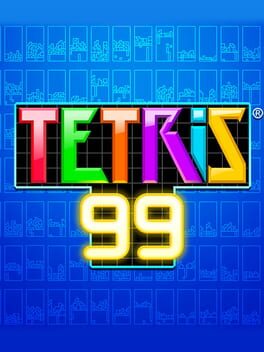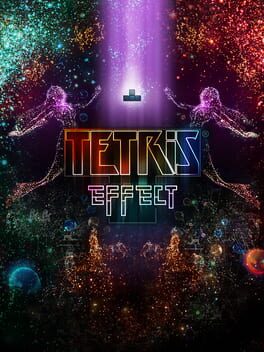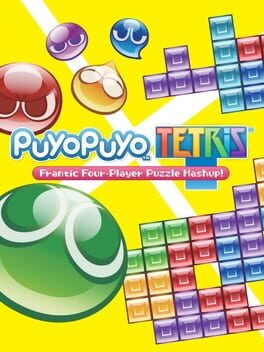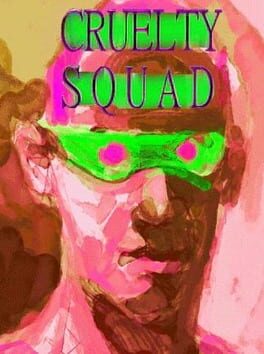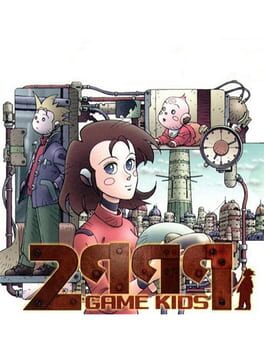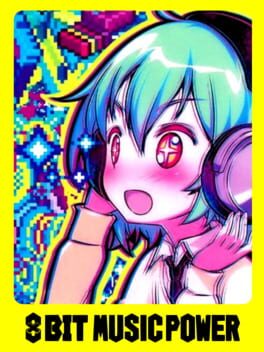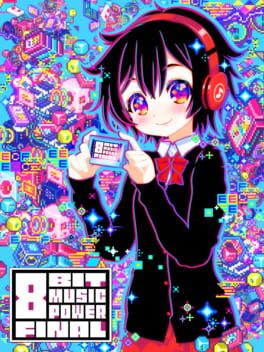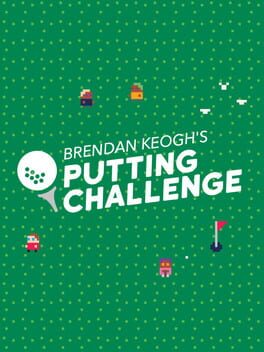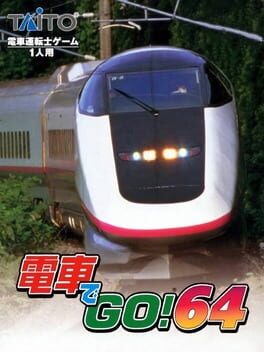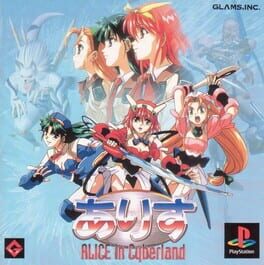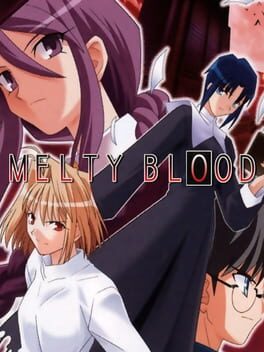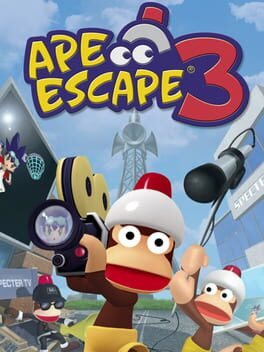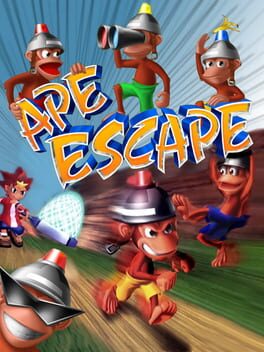chucklenuts
112 reviews liked by chucklenuts
Far and away the most egregiously misguided attempt at myth-making in games history. This isn't the worst game ever. It's not the weirdest game ever. It is not the 'first American produced visual novel.' Limited Run Games seems content to simply upend truth and provenance to push a valueless narrative. The 'so bad it's good' shtick serves only to lessen the importance of early multimedia CD-ROM software, and drenching it in WordArt and clip art imparts the notion that this digital heritage was low class, low brow, low effort, and altogether primitive.
This repackaging of an overlong workplace sexual harassment/rape joke is altogether uncomfortable at best. Further problematising this, accompanying merch is resplendent with Edward J. Fasulo's bare chest despite him seemingly wanting nothing to do with the project. We've got industry veterans and games historians talking up the importance of digital detritus alongside YouTubers and LRG employees, the latter making the former less credible. We've got a novelisation by Twitter 'comedian' Mike Drucker. We've got skate decks and body pillows and more heaps of plastic garbage for video game 'collectors' to shove on a dusty shelf next to their four colour variants of Jay and Silent Bob Mall Brawl on NES, cum-encrusted Shantae statue, and countless other bits of mass-produced waste that belongs in a landfill. Utterly shameful how we engage with the past.
Bonus Definitive Edition content:
Limited Run Games is genuinely one of the most poorly managed companies on earth and I will never forgive them for giving me a PS5 copy of Cthulhu Saves Christmas instead of what I had actually ordered, a System Shock boxart poster. They also keep sending me extra copies of Jeremy Parish's books. Please, I do not need three copies of Virtual Boy Works.
This repackaging of an overlong workplace sexual harassment/rape joke is altogether uncomfortable at best. Further problematising this, accompanying merch is resplendent with Edward J. Fasulo's bare chest despite him seemingly wanting nothing to do with the project. We've got industry veterans and games historians talking up the importance of digital detritus alongside YouTubers and LRG employees, the latter making the former less credible. We've got a novelisation by Twitter 'comedian' Mike Drucker. We've got skate decks and body pillows and more heaps of plastic garbage for video game 'collectors' to shove on a dusty shelf next to their four colour variants of Jay and Silent Bob Mall Brawl on NES, cum-encrusted Shantae statue, and countless other bits of mass-produced waste that belongs in a landfill. Utterly shameful how we engage with the past.
Bonus Definitive Edition content:
Limited Run Games is genuinely one of the most poorly managed companies on earth and I will never forgive them for giving me a PS5 copy of Cthulhu Saves Christmas instead of what I had actually ordered, a System Shock boxart poster. They also keep sending me extra copies of Jeremy Parish's books. Please, I do not need three copies of Virtual Boy Works.
It is easy to be dismissive. Be it art, people, food, events, the rapid, continual pace of consumption necessitates the compartmentalisation and categorisation of happenings. One can be dismissive in the positive and in the negative. The complex emotions elicited through our lives fade as quickly as they arise. Perhaps it is a consequence of language, an inability to express the phenomenon of experience. A meal's interplay of tantalising nostalgic aroma and comforting warmth in the belly is, for most of our lives, recalled as good - if it is remembered at all. A film is so bad it's good, some self-fulfilling label that sets expectations and ebbs the need for analysis of artistic merit and failure. A book is well-written. Your ex is a bitch. Last Christmas was good.
In the new hyperactive mode, wherein consumption happens largely for the sake of consumption, categorisation happens more readily, more aggressively, less critically. A director is washed. Your favourite is 🐐-ed. Films are kino or coal. Aesthetics are reduced to haphazard strictures, art pinned as frutiger aero, frasurbane, girlypunk neo-Y2K vectorheart nu-brute. Games are flavour of the month, kusoge, kamige, kiige, bakage, normiecore. Bring something up, and everyone has an opinion, a rote repetition of regurgitated refuse. Exhibit passion for that outside the zeitgeist, and be lambasted. Convey discontent with the beloved, be accused of poor media literacy. Are we even partaking of that which we parade around, or are we playing an elaborate game of telephone?
Even Burger King Orientation CD-i Training cannot escape unharmed. A wave of ironic praise and genuine befuddlement at why this exists, why it is revisited. One must be seeking attention for having such a quirky thing on their profile. It is impossible that it is enjoyed on a deeper level, as a response to a wider fascination, as a dive into historical (non-)import. The new hyperactive mode intentionally seeks signifiers which mark the self as interesting. An intentional facade which begs it won't be scrutinised.
But just because you have constructed this mask does not mean we all wear it. And perhaps I am being dismissive of your own thoughts. The truth of the matter is you don't care what I think, or why I feel a certain way. And to be fair, I feel the same animosity towards you. We are strangers at the conflux of comparison of preference.
I am filled with a genuine glee when I 'play' Burger King Orientation CD-i Training, but maybe it is best I keep the reasons to myself, as with so much else.
After all, you care not for what I think, so what is the difference if those thoughts are no longer laid bare.
In the new hyperactive mode, wherein consumption happens largely for the sake of consumption, categorisation happens more readily, more aggressively, less critically. A director is washed. Your favourite is 🐐-ed. Films are kino or coal. Aesthetics are reduced to haphazard strictures, art pinned as frutiger aero, frasurbane, girlypunk neo-Y2K vectorheart nu-brute. Games are flavour of the month, kusoge, kamige, kiige, bakage, normiecore. Bring something up, and everyone has an opinion, a rote repetition of regurgitated refuse. Exhibit passion for that outside the zeitgeist, and be lambasted. Convey discontent with the beloved, be accused of poor media literacy. Are we even partaking of that which we parade around, or are we playing an elaborate game of telephone?
Even Burger King Orientation CD-i Training cannot escape unharmed. A wave of ironic praise and genuine befuddlement at why this exists, why it is revisited. One must be seeking attention for having such a quirky thing on their profile. It is impossible that it is enjoyed on a deeper level, as a response to a wider fascination, as a dive into historical (non-)import. The new hyperactive mode intentionally seeks signifiers which mark the self as interesting. An intentional facade which begs it won't be scrutinised.
But just because you have constructed this mask does not mean we all wear it. And perhaps I am being dismissive of your own thoughts. The truth of the matter is you don't care what I think, or why I feel a certain way. And to be fair, I feel the same animosity towards you. We are strangers at the conflux of comparison of preference.
I am filled with a genuine glee when I 'play' Burger King Orientation CD-i Training, but maybe it is best I keep the reasons to myself, as with so much else.
After all, you care not for what I think, so what is the difference if those thoughts are no longer laid bare.
Night Cafe
1997
Making the intricacies of fine art history enjoyable is an unenviable task that CD-ROM interactive experiences fervently tried to surmount throughout the 1990s. Whereas Mystery of the Orangery and Mission Sunlight opted for narrative adventures that happened to teach art history through immersive paintings as setpieces, Night Cafe takes a drier, safer approach. Wandering the streets of Montmarte with nary a pedestrian in sight. Overcast lighting doing Haussmann's Paris a disservice. Setting off to some select locales, able to wander just enough to question why the option exists when one is intended to beeline to the puzzle objectives.
The narration is smooth and deep, but fails to impart knowledge on the why of the Impressionists, opting instead for discussion of relations and painterly methodology. While this is fine for those already familiar with the subject matter, it assuredly would leave the casually interested in the dark as to what the point of it all was. Yes, the Impressionists sought an interplay of light and colour and open compositions, yes they painted en plein aire, yes they were rejected from the Salon de Paris, but why does that matter? Académie des Beaux-Arts is mentioned in passing, but little is said of the wilful rejection of contemporary standards.
Of interest must be the methodology herein. Outside those typically solitary narrations, much of the text exists as excerpts from correspondence. This holds true in the 'adventure' part of the game, and in the unlocked galleries of each artist's works. If a painting does have an accompanying document (in both French and English), it establishes some slight context, but leaves the work itself unexplained and unexplored. Perhaps a scholastic explanation of each work would be excessive. But as it stands, one is left wondering why these specific paintings matter. We are told Manet's Olympia was controversial and important, but not how or why. With the dictionary/encyclopedia ever at the ready within the program, it seems a misstep -- the primary sources could be front and centre, with greater detail and sources in that secondary space.
The loose gameplay of Night Cafe disappoints as well. Sometimes one wanders through each and every pre-rendered scene in a space, collecting objects or figures. These are then placed blindly onto a painted surface to reconstruct a relevant work, or are arranged into sequence despite the player having no means of knowing the solution. By way of example, in Theo van Gogh's apartment, sepia prints of Vincent's works are gathered, then put into frames labelled with years and locations. Two of these can be solved by comparing the tiny image to sketches on letters nearby. The rest cannot. Except there is no consequence for mismatching frame and picture, so just drag them one by one onto each frame to see what sticks. Absolutely nothing is learned here. The same holds true for when placing figures into a scene. One has no clue who these figures are, nor where they are situated, nor why this even matters. The figures aren't even named. The other puzzles invariably require moving sliders to change 3x3 tiles of paintings, only the sliders affect two tiles rather than just the one selected. It isn't challenging, only frustrating.
Despite doing nothing particularly well, Night Cafe nonetheless is a cute enough experience for the weary art history student. It is a short romp where I could smile in recognition of critical artworks, and raise an eyebrow at the inclusion of Post-Impressionists. Outside of that, there is little (if not nothing) to be learned here and not a shred of fun drawn from the adventure and its challenges. It is a testament to misplaced zeal in the heyday of multimedia, a presupposing that anything is implicitly interesting by virtue of being on a poly-carbonate optical disc.
The narration is smooth and deep, but fails to impart knowledge on the why of the Impressionists, opting instead for discussion of relations and painterly methodology. While this is fine for those already familiar with the subject matter, it assuredly would leave the casually interested in the dark as to what the point of it all was. Yes, the Impressionists sought an interplay of light and colour and open compositions, yes they painted en plein aire, yes they were rejected from the Salon de Paris, but why does that matter? Académie des Beaux-Arts is mentioned in passing, but little is said of the wilful rejection of contemporary standards.
Of interest must be the methodology herein. Outside those typically solitary narrations, much of the text exists as excerpts from correspondence. This holds true in the 'adventure' part of the game, and in the unlocked galleries of each artist's works. If a painting does have an accompanying document (in both French and English), it establishes some slight context, but leaves the work itself unexplained and unexplored. Perhaps a scholastic explanation of each work would be excessive. But as it stands, one is left wondering why these specific paintings matter. We are told Manet's Olympia was controversial and important, but not how or why. With the dictionary/encyclopedia ever at the ready within the program, it seems a misstep -- the primary sources could be front and centre, with greater detail and sources in that secondary space.
The loose gameplay of Night Cafe disappoints as well. Sometimes one wanders through each and every pre-rendered scene in a space, collecting objects or figures. These are then placed blindly onto a painted surface to reconstruct a relevant work, or are arranged into sequence despite the player having no means of knowing the solution. By way of example, in Theo van Gogh's apartment, sepia prints of Vincent's works are gathered, then put into frames labelled with years and locations. Two of these can be solved by comparing the tiny image to sketches on letters nearby. The rest cannot. Except there is no consequence for mismatching frame and picture, so just drag them one by one onto each frame to see what sticks. Absolutely nothing is learned here. The same holds true for when placing figures into a scene. One has no clue who these figures are, nor where they are situated, nor why this even matters. The figures aren't even named. The other puzzles invariably require moving sliders to change 3x3 tiles of paintings, only the sliders affect two tiles rather than just the one selected. It isn't challenging, only frustrating.
Despite doing nothing particularly well, Night Cafe nonetheless is a cute enough experience for the weary art history student. It is a short romp where I could smile in recognition of critical artworks, and raise an eyebrow at the inclusion of Post-Impressionists. Outside of that, there is little (if not nothing) to be learned here and not a shred of fun drawn from the adventure and its challenges. It is a testament to misplaced zeal in the heyday of multimedia, a presupposing that anything is implicitly interesting by virtue of being on a poly-carbonate optical disc.
Doom Eternal
2020
A shame. The sleekness of DOOM (2016) is nowhere to be found—it’s been replaced with ugly garishness in nearly every facet of Eternal’s design.
The chonky combat remains, with gun-feel and glory kill animations improved considerably—and the music is still great!—but that’s where the positives end. The game is pumped absolutely chock-full with annoying, difficult-to-internalize mechanics, overwrought platforming puzzles (the effortless platforming in 2016 is so much better!), and a stupid, hamfisted story and atmosphere.
The appeal of DOOM (2016) had a lot to do with the interplay of self-serious elements and campy ones. It was like watching a B-movie that believed, wholeheartedly, in its own awesomeness. Eternal just plops face-first into campy mud, goofifying everything and winking at the player incessantly, sapping the game of any actual coolness. Those moments of quiet viscerality from the first game are half-assed or just completely non-existent.
Id has cranked the difficulty up, both in terms of enemy aggressiveness and, just, the sheer amount of bullshit you have to learn and remember. Oh I can grapple and blood punch and flame belch and chainsaw and double dash and ice grenade OR regular grenade, in addition to shooting my weapons with hot-swappable mods? Cool! Is it any fun to juggle it all, really? No, it isn’t!
I came back to Eternal thinking I’d been too hard on it, and found just the opposite— I like it even less now. It infuriatingly squanders the potential of its fantastic predecessor, going decidedly for content quantity over quality, and losing almost everything that made the latter feel special. While it’s not terrible in its own right, I consider it one of my personal biggest disappointments of the modern gaming era.
The chonky combat remains, with gun-feel and glory kill animations improved considerably—and the music is still great!—but that’s where the positives end. The game is pumped absolutely chock-full with annoying, difficult-to-internalize mechanics, overwrought platforming puzzles (the effortless platforming in 2016 is so much better!), and a stupid, hamfisted story and atmosphere.
The appeal of DOOM (2016) had a lot to do with the interplay of self-serious elements and campy ones. It was like watching a B-movie that believed, wholeheartedly, in its own awesomeness. Eternal just plops face-first into campy mud, goofifying everything and winking at the player incessantly, sapping the game of any actual coolness. Those moments of quiet viscerality from the first game are half-assed or just completely non-existent.
Id has cranked the difficulty up, both in terms of enemy aggressiveness and, just, the sheer amount of bullshit you have to learn and remember. Oh I can grapple and blood punch and flame belch and chainsaw and double dash and ice grenade OR regular grenade, in addition to shooting my weapons with hot-swappable mods? Cool! Is it any fun to juggle it all, really? No, it isn’t!
I came back to Eternal thinking I’d been too hard on it, and found just the opposite— I like it even less now. It infuriatingly squanders the potential of its fantastic predecessor, going decidedly for content quantity over quality, and losing almost everything that made the latter feel special. While it’s not terrible in its own right, I consider it one of my personal biggest disappointments of the modern gaming era.
Rocket Racing
2023
Indigo Prophecy
2005
Blossoms from a trite narrative about murder and possession into an out of left field power fantasy before shedding any pretense of comprehensibility as it goes entirely off the rails. Loose plot points are connected by a dense web of red string on the corkboard that is Cage's mind which becomes ever sparse as it progresses. These 'revelations' are at first jarring, but their accelerating frequency leaves one eventually thinking "of course, why not at this point?"
I think there is a world where Fahrenheit is a better narrative, but a worse experience. It is a world where the vast majority of its identity is stripped away. It is a game without vampires, Mayan sacrifice, AI, irradiated wombs, wallrunning, flying slapfights, the homeless underground network, time travel, obsidian panthers, asylums, and global cooling. It is a game about a murder, a continuation of the first two thirds of the game. It is a game where the inner turmoil of ending a life isn't remedied by taking a piss. It is a game that is indistinguishable from a movie, a fulfillment of Cage's desires, ignorant of what being a game allows it to get away with.
Were this not a game, I'd have shut it off at its first bizarre twists. But it is a game, one which is so absurd as to be adorable. One where my engagement in its twists and turns ingratiates me to its madness. I won't sit idly by while a slurry of malformed ideas pools around me, but give me a chance to play in that muck and I'll be glad.
I think there is a world where Fahrenheit is a better narrative, but a worse experience. It is a world where the vast majority of its identity is stripped away. It is a game without vampires, Mayan sacrifice, AI, irradiated wombs, wallrunning, flying slapfights, the homeless underground network, time travel, obsidian panthers, asylums, and global cooling. It is a game about a murder, a continuation of the first two thirds of the game. It is a game where the inner turmoil of ending a life isn't remedied by taking a piss. It is a game that is indistinguishable from a movie, a fulfillment of Cage's desires, ignorant of what being a game allows it to get away with.
Were this not a game, I'd have shut it off at its first bizarre twists. But it is a game, one which is so absurd as to be adorable. One where my engagement in its twists and turns ingratiates me to its madness. I won't sit idly by while a slurry of malformed ideas pools around me, but give me a chance to play in that muck and I'll be glad.
The Exit 8
2023
A meticulous on-going negotiation between space, architecture, self-doubt, and the rigidity of systems real and imagined.
Go buy and play it. Equip your horse blinders because the store page sours things a bit.
ここでは
左側通行
⬅
Perfect tectonic representation of Japanese underground passageways afforded by advances in games graphics. The hyperreal supplants the original to the extent that, as in reality, it becomes visual noise, consumed without deliberate thought. Without knowing what The Exit 8 delivers, its call to pay attention to surroundings becomes an act of questioning minutiae and the necessary bounds of the game space. In quietly becoming familiar with the space itself, differences should become apparent, but the mind effectively second-guesses itself amid a sea of static. Occasionally it is blatant, more often fleeting as a wandering eye spot, impossible to catch within one's focus and definitively claim it to be actual.
Of course, if it really was that subtle it wouldn't be a very rewarding experience, but the learning experience is reinforced by the dread of seeing 0, an affirmation that you missed something or, more terrifyingly, misremembered something. Were the posters always in that configuration? Did the passerby look like that? How grungy was it last time?
By not repeating itself until the bag of tricks runs empty, The Exit 8 refuses to even give the player the opportunity to enter routine, to become acquainted with the unfamiliar. Even the security of 8 not a perfect shield until the assurance of leaving it behind.
Go buy and play it. Equip your horse blinders because the store page sours things a bit.
ここでは
左側通行
⬅
Perfect tectonic representation of Japanese underground passageways afforded by advances in games graphics. The hyperreal supplants the original to the extent that, as in reality, it becomes visual noise, consumed without deliberate thought. Without knowing what The Exit 8 delivers, its call to pay attention to surroundings becomes an act of questioning minutiae and the necessary bounds of the game space. In quietly becoming familiar with the space itself, differences should become apparent, but the mind effectively second-guesses itself amid a sea of static. Occasionally it is blatant, more often fleeting as a wandering eye spot, impossible to catch within one's focus and definitively claim it to be actual.
Of course, if it really was that subtle it wouldn't be a very rewarding experience, but the learning experience is reinforced by the dread of seeing 0, an affirmation that you missed something or, more terrifyingly, misremembered something. Were the posters always in that configuration? Did the passerby look like that? How grungy was it last time?
By not repeating itself until the bag of tricks runs empty, The Exit 8 refuses to even give the player the opportunity to enter routine, to become acquainted with the unfamiliar. Even the security of 8 not a perfect shield until the assurance of leaving it behind.
In the old days, the cry in the joints, when they were ready to close, was “you don’t have to go home, but you can’t stay here.” -- Boston Herald (March 5, 1944) p. 19, col. 3
The meal is finished, the bill awaiting payment. The din of called orders and いらっしゃいませ indirect signs to leave. Maybe there's a concrete reason for lingering. The train won't arrive for a while. You're waiting for someone to finish shopping. The landlord is fixing the AC. Your parents have been fighting. You get an hour for lunch. Returning home means a slow spiral of distraction until rest and the cycle begins anew tomorrow.
A State Police office and a State Policewoman were on the premises when the Glass Hut was raided in 1960. They reported George Tecci, as was his custom, notified the patrons just before 1 a.m., “You don’t have to go home, but you can’t stay here.” -- Record American (August 11, 1964) p. 8, cols. 2-3
Does the why matter? Isn't it enough to not want to go home? Isn't it enough to just want to be for a moment? The toll has already been paid, a bowl of negi ramen. Does that not grant me the opportunity to exist in space and time without spending more? The park is too far, my head too aching, the air too chill. I am here. Let me be here. Do I need a reason to exist, to be listless?
食い終わったらさっさと帰れ
There's no point to pecking at the oil in my ramen. No more than there is to counting the grains of rice in a bowl. No more than there is to playing any game. No more than there is to doing anything. Work and leisure both a conscious and unconscious consumption of finite time in exchange for a something which is nothing in truth. Everything is passing time until we die. It might be Zen or Stoicism or Ascetic. In any case, I choose how I while away my dwindling moments.
That, is itself, a freedom.
The meal is finished, the bill awaiting payment. The din of called orders and いらっしゃいませ indirect signs to leave. Maybe there's a concrete reason for lingering. The train won't arrive for a while. You're waiting for someone to finish shopping. The landlord is fixing the AC. Your parents have been fighting. You get an hour for lunch. Returning home means a slow spiral of distraction until rest and the cycle begins anew tomorrow.
A State Police office and a State Policewoman were on the premises when the Glass Hut was raided in 1960. They reported George Tecci, as was his custom, notified the patrons just before 1 a.m., “You don’t have to go home, but you can’t stay here.” -- Record American (August 11, 1964) p. 8, cols. 2-3
Does the why matter? Isn't it enough to not want to go home? Isn't it enough to just want to be for a moment? The toll has already been paid, a bowl of negi ramen. Does that not grant me the opportunity to exist in space and time without spending more? The park is too far, my head too aching, the air too chill. I am here. Let me be here. Do I need a reason to exist, to be listless?
食い終わったらさっさと帰れ
There's no point to pecking at the oil in my ramen. No more than there is to counting the grains of rice in a bowl. No more than there is to playing any game. No more than there is to doing anything. Work and leisure both a conscious and unconscious consumption of finite time in exchange for a something which is nothing in truth. Everything is passing time until we die. It might be Zen or Stoicism or Ascetic. In any case, I choose how I while away my dwindling moments.
That, is itself, a freedom.
Wonder Flower gimmicks are cute until they turn repetitious, which they do by the end of World 2. The badges largely make up for a lack of platforming aptitude which, as a seasoned gamester, means I have to play the game wrong to accommodate their use. But I'm not gonna unlearn my Mario skills so I don't remember to use them outside of when they are clearly necessary for side objectives like an over-polished immsim. You mean I should use the Dolphin badge on the levels right after I got it? Wowee Zowee!
Broadly speaking this feels like an attempt to teach the kids that grew up with the Switch what Mario is about. The hypersleek UI elements, mountains of spoken text as a replacement for other markers of design intent, the badges, the Wowee Zowee, the oodles of characters, the gacha elements of the standees, the multiple currencies (and decimalisation of Flower coins to further litter the field with shinies), the little emojis, the lack of points. These additions and subtractions are by no means bad but I won't lie, it feels a little like I'm playing a AAA game from the 2020s. Because I am. It's hard to read Wonder as a creative reinvention and reinvigoration of Mario because I know it took thousands of people to make this. That every decision was subject to board meetings and focus groups. It's the same problem as your New Super games -- the formula must be adhered to. And even if the formula changes, it's still a formula. Nothing wrong with that, but it's not what I look for at this point in my life.
I'll keep playing it, I'll probably finish it. It's like a Coca-Cola Creation, y'know? You see it on the shelf, you think 'what the hell do '+XP' or 'Starlight' taste like, the first sip is novel and enchanting, before long you're still drinking Coke. If I want true innovation, I'll reach for the local-made can of kombucha flavoured with some berry I've never heard of before. Like Haskap. Uhhh, for the purposes of this analogy I guess the random shit I pick up on Steam and itch.io are the kombucha.
And I gotta say, I'm sorry but I can't hear the Mario Gang say Wowee Zowee without having flashbacks to Game Grumps Kirby Super Star Part 2 where Jon and Arin argued for like a minute straight over whether or not Arin had said Wowee Zowee before. Back then life was so simple. I was so young. Games held so much potential. Eleven years, gone in the blink of an eye. In another life, I'm the Mario Wonder kid, growing up on a Switch. Who could have known things would turn out the way they did, that I'd be the person I am today...
Feels like a rebrand to cover up some controversial past half the time.
WOAH JUST LIKE GAME GRUMPS 😱
Broadly speaking this feels like an attempt to teach the kids that grew up with the Switch what Mario is about. The hypersleek UI elements, mountains of spoken text as a replacement for other markers of design intent, the badges, the Wowee Zowee, the oodles of characters, the gacha elements of the standees, the multiple currencies (and decimalisation of Flower coins to further litter the field with shinies), the little emojis, the lack of points. These additions and subtractions are by no means bad but I won't lie, it feels a little like I'm playing a AAA game from the 2020s. Because I am. It's hard to read Wonder as a creative reinvention and reinvigoration of Mario because I know it took thousands of people to make this. That every decision was subject to board meetings and focus groups. It's the same problem as your New Super games -- the formula must be adhered to. And even if the formula changes, it's still a formula. Nothing wrong with that, but it's not what I look for at this point in my life.
I'll keep playing it, I'll probably finish it. It's like a Coca-Cola Creation, y'know? You see it on the shelf, you think 'what the hell do '+XP' or 'Starlight' taste like, the first sip is novel and enchanting, before long you're still drinking Coke. If I want true innovation, I'll reach for the local-made can of kombucha flavoured with some berry I've never heard of before. Like Haskap. Uhhh, for the purposes of this analogy I guess the random shit I pick up on Steam and itch.io are the kombucha.
And I gotta say, I'm sorry but I can't hear the Mario Gang say Wowee Zowee without having flashbacks to Game Grumps Kirby Super Star Part 2 where Jon and Arin argued for like a minute straight over whether or not Arin had said Wowee Zowee before. Back then life was so simple. I was so young. Games held so much potential. Eleven years, gone in the blink of an eye. In another life, I'm the Mario Wonder kid, growing up on a Switch. Who could have known things would turn out the way they did, that I'd be the person I am today...
Feels like a rebrand to cover up some controversial past half the time.
WOAH JUST LIKE GAME GRUMPS 😱
Well at least Justin's not here.
Slightly less ad-libbed, as repetitious as ever in its jokes and play. Space Applebees caught you offguard last time? Well here's Cheers under an alien's ass. In case you didn't catch that the slugs are on the salt planet, I'll tell you a few more times. Guys, Amazon workers deal with horrid conditions, get it? Knifey sure is violent.
The new pinball gun is the most interesting weapon in the game, adorned with three phat ass babbling blue boys. High on Knife mostly throws basic enemies at you as a realisation that the gameplay really isn't what you're here for. The bells and whistles providing some auditory relief. Press F topay respects kill enemies instantly and get it over with. Surfing on walls is vaguely cool if poorly realised, especially with Knifey telling you the act itself is cool.
As paltry as the gameplay is, at least it can be engaged with while the cast is yammering. On the other side of the coin, whenever dialogue occurs it is usually two characters talking at you. Or three. Sometimes even four. Three quarters of the screen are eventually squatted in by characters in dark rooms with monotone pink walls and swarms of pink enemies. To call it an assault on the eyes and ears is to undersell it. Maybe it was because thirteen people were goofing in my ears the whole time. Even before the aggravations reach a crescendo, the eye drifts across a featureless white planet, and rote gunmetal corridors. Almost everyone is a slug or a cock with tits. There is simply nothing to break things up.
At least Justin's not here. Not a stammer in sight. As one-dimensional as he is, Knifey carries(?) the whole two hours thanks to Michael Cusack's performance. Though by the end I was hoping even he would shut up. And Tim Robinson. And Gabourey Sidibe. I wish they'd all just zip it for a second if only so my friends could hear my great jokes instead.
Slightly less ad-libbed, as repetitious as ever in its jokes and play. Space Applebees caught you offguard last time? Well here's Cheers under an alien's ass. In case you didn't catch that the slugs are on the salt planet, I'll tell you a few more times. Guys, Amazon workers deal with horrid conditions, get it? Knifey sure is violent.
The new pinball gun is the most interesting weapon in the game, adorned with three phat ass babbling blue boys. High on Knife mostly throws basic enemies at you as a realisation that the gameplay really isn't what you're here for. The bells and whistles providing some auditory relief. Press F to
As paltry as the gameplay is, at least it can be engaged with while the cast is yammering. On the other side of the coin, whenever dialogue occurs it is usually two characters talking at you. Or three. Sometimes even four. Three quarters of the screen are eventually squatted in by characters in dark rooms with monotone pink walls and swarms of pink enemies. To call it an assault on the eyes and ears is to undersell it. Maybe it was because thirteen people were goofing in my ears the whole time. Even before the aggravations reach a crescendo, the eye drifts across a featureless white planet, and rote gunmetal corridors. Almost everyone is a slug or a cock with tits. There is simply nothing to break things up.
At least Justin's not here. Not a stammer in sight. As one-dimensional as he is, Knifey carries(?) the whole two hours thanks to Michael Cusack's performance. Though by the end I was hoping even he would shut up. And Tim Robinson. And Gabourey Sidibe. I wish they'd all just zip it for a second if only so my friends could hear my great jokes instead.

